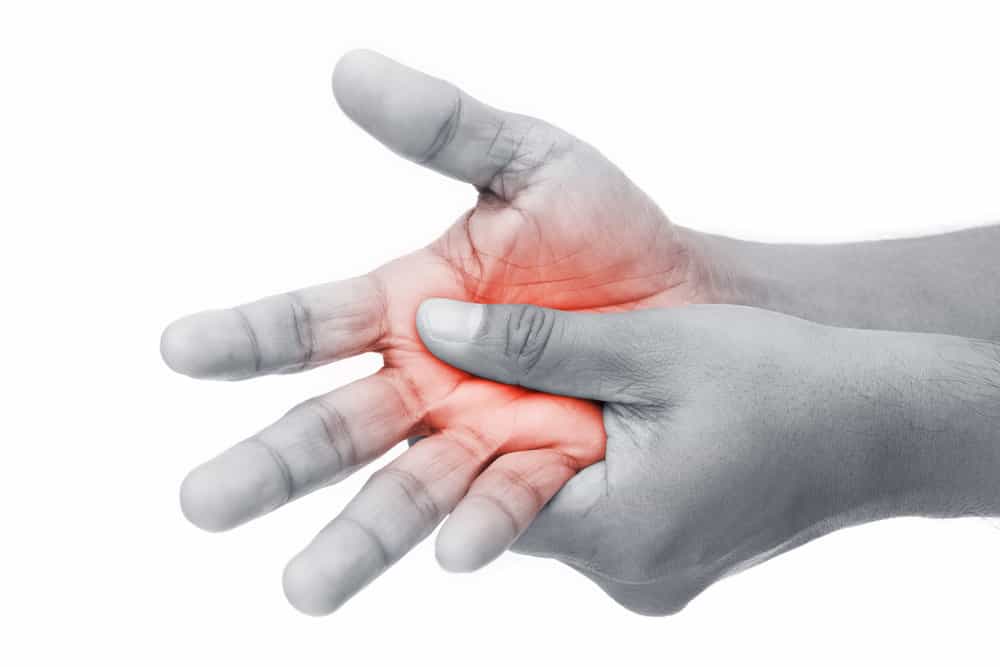
It was an otherwise unremarkable afternoon in the ER, when a 26-year-old patient was brought in with an industrial injury. He had been working with an extremely high pressure hydraulic line that had a pinhole leak and sustained a high pressure injury to the web space between the 4th and 5th fingers of his left hand.
Being a very stoic fellow, he said he didn’t know what all the fuss was about as it was just a tiny wound. Although he did admit he had a lot of pain in the affected limb. “Doc, just give me a tetanus shot and I can go back to work.”
On examination, his hand appeared to be swollen but with some bluish discoloration of his hand proximal to a small puncture wound. There was tenderness of his hand and forearm. He had numbness to sensation on the medial aspect of his 4th finger but otherwise CMS was intact.
Much to his dismay, I told him we would have to consult a surgeon immediately as this was a serious injury which required an operation to meticulously clean and debride the affected tissues, removing any contaminated or necrotic material. Otherwise he could end up losing his hand.
High-pressure injection injuries are fairly rare and usually involve the hand. The severity of these injuries are often underestimated by medical providers. They can vary in severity depending on several factors, including the type of fluid injected, the pressure involved, and the duration of exposure.
The symptoms may not be immediately apparent, as the initial puncture wound might seem minor. However, as time passes, the hand may experience intense pain and swelling around the site of injection. The pain can be severe, throbbing, and may worsen with movement or pressure.
The injured hand may become stiff, making it difficult to move the affected fingers or wrist. The range of motion can be significantly reduced due to swelling, tissue damage, or joint involvement.
The injected fluid may cause discoloration of the skin, appearing as a bluish or purplish hue around the puncture wound or spreading to other areas of the hand. This discoloration is often indicative of tissue damage or compromised blood flow.
The high-pressure fluid can cause nerve compression or injury, leading to sensations of numbness, tingling, or even complete loss of sensation in the affected fingers or hand.
If the injected fluid is toxic or contains harmful substances, it can cause tissue death (necrosis). This can manifest as areas of blackened or darkened skin, ulceration, or even the formation of deep wounds. Systemic symptoms are also possible.
High-pressure injection injuries also have an increased risk of infection due to the introduction of bacteria or other contaminants into the tissues. Signs of infection may include increased pain, redness, warmth, swelling, discharge, or the presence of pus around the wound.
It’s important to note that the severity of symptoms can vary based on the specific circumstances of the injury. It is crucial that high pressure injuries be taken seriously. They require immediate surgical intervention, as early intervention can greatly improve outcomes and reduce the risk of complications.
Being a very stoic fellow, he said he didn’t know what all the fuss was about as it was just a tiny wound. Although he did admit he had a lot of pain in the affected limb. “Doc, just give me a tetanus shot and I can go back to work.”
On examination, his hand appeared to be swollen but with some bluish discoloration of his hand proximal to a small puncture wound. There was tenderness of his hand and forearm. He had numbness to sensation on the medial aspect of his 4th finger but otherwise CMS was intact.
Much to his dismay, I told him we would have to consult a surgeon immediately as this was a serious injury which required an operation to meticulously clean and debride the affected tissues, removing any contaminated or necrotic material. Otherwise he could end up losing his hand.
High-pressure injection injuries are fairly rare and usually involve the hand. The severity of these injuries are often underestimated by medical providers. They can vary in severity depending on several factors, including the type of fluid injected, the pressure involved, and the duration of exposure.
The symptoms may not be immediately apparent, as the initial puncture wound might seem minor. However, as time passes, the hand may experience intense pain and swelling around the site of injection. The pain can be severe, throbbing, and may worsen with movement or pressure.
The injured hand may become stiff, making it difficult to move the affected fingers or wrist. The range of motion can be significantly reduced due to swelling, tissue damage, or joint involvement.
The injected fluid may cause discoloration of the skin, appearing as a bluish or purplish hue around the puncture wound or spreading to other areas of the hand. This discoloration is often indicative of tissue damage or compromised blood flow.
The high-pressure fluid can cause nerve compression or injury, leading to sensations of numbness, tingling, or even complete loss of sensation in the affected fingers or hand.
If the injected fluid is toxic or contains harmful substances, it can cause tissue death (necrosis). This can manifest as areas of blackened or darkened skin, ulceration, or even the formation of deep wounds. Systemic symptoms are also possible.
High-pressure injection injuries also have an increased risk of infection due to the introduction of bacteria or other contaminants into the tissues. Signs of infection may include increased pain, redness, warmth, swelling, discharge, or the presence of pus around the wound.
It’s important to note that the severity of symptoms can vary based on the specific circumstances of the injury. It is crucial that high pressure injuries be taken seriously. They require immediate surgical intervention, as early intervention can greatly improve outcomes and reduce the risk of complications.


